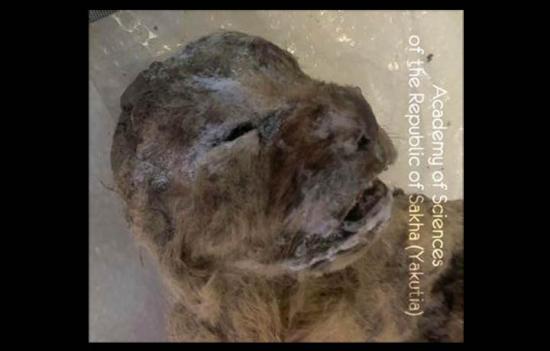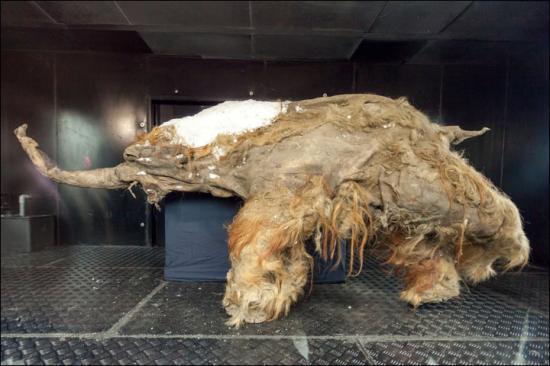Anastasia Koryakina
Source - http://siberiantimes.com/science/others/news/n0464-meet-this-extinct-cave-lion-at-least-10000-years-old/
'Sensational' find of two cubs, the best preserved ever seen in the world, announced today.
 The cave lions were almost perfectly preserved in permafrost and could be much older. Picture: Academy of Sciences of Yakutia
The cave lions were almost perfectly preserved in permafrost and could be much older. Picture: Academy of Sciences of Yakutia
The unprecedented discovery of the ancient predator was made this summer in the Sakha Republic, also known as Yakutia. The cave lions were almost perfectly preserved in permafrost and could be much older.
The Siberian Times is proud to be working with the Academy of Sciences of Yakutia which will introduce the cubs properly at a presentation to the Russian and international media in late November.
Along with the two lions, paleontologists will also show other Pleistocene animals preserved by ice in this vast region, the largest and coldest in the Russian Federation. Among these will be the famous woolly mammoth Yuka, the 'Oimyakon' mammoth, the carcass of a Kolyma woolly rhinoceros, and Yukagir bison and horses.
Interested media organisations are invited to use the contacts below if they wish to attend.
The cave lions - Panthera spelaea (Goldfuss) - lived during Middle and Late Pleistocene times on the Eurasian continent, from the British Isles to Chukotka in the extreme east of Russia, and they also roamed Alaska and northwestern Canada. The extinct creatures were close relatives of modern Afro-Asiatic lion.
Finds of their remains are rare: today's announcement about the existence of the pair is coupled with the confident claim that they are best preserved ever unearthed in the world.

 Along with the two lions, paleontologists will also show other Pleistocene animals preserved by ice in this vast region, the largest and coldest in the Russian Federation. Picture: Academy of Sciences of Yakutia, RGO
Along with the two lions, paleontologists will also show other Pleistocene animals preserved by ice in this vast region, the largest and coldest in the Russian Federation. Picture: Academy of Sciences of Yakutia, RGO
Full details will be given at the presentation in November, including the first results of research into the lions.
Previously, only fragments of carcasses, parts of skeletons and individual bones had been found. Until now, in Yakutia, only skulls, some teeth and bones were unearthed which has prevented scientists having more than an approximate image of the extinct creature.
Like other ancient animals, the cave lion became extinct: research on the two cubs could help to explain why they died out around 10,000 years ago, since the animal had few predators, was smaller than herbivores, and was not prone to getting bogged down in swamps, as did woolly mammoths and rhinos. One theory is a decline in deer and cave bears, their prey, caused their demise.
'The find is sensational, no doubt,' said a source close to the discovery. It is known the remains are free of dangerous infections such as anthrax following initial microbiological analysis, but no other significant details or pictures will be released before the presentation.